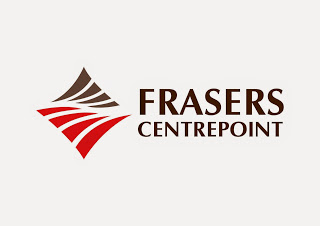This is the second series on the FCL retail bonds which seems to be a very hot topic these days. For the first part, you can view my previous article here.

The prospectus did show a bit more information on what we need to more as a bondholder and one of those is to ascertain whether there are a callable feature which would disadvantage the bondholders.
As a fixed income investor, this represents an early redemption risk on top of the reinvestment risk that bondholders need to consider, especially in a low interest rate environment where it goes in favor of the issuer. To account for this particular disadvantage to the bondholder, there is a callable premium that the issuer would have to pay on top of the normal redeemable par value amount. The callable feature would exist in the 4th year of the issued date from 22 May 2019 onwards with the details shown below. The IRR for the earliest redemption should it happen would be at 4.1%, so bondholders would enjoy the premium over the guaranteed 3.65%.

With the impending interest rate increase, I doubt that we will be seeing any sort of redemption going unless they can issue at a lower rate. It is also unlikely that the issuer will recall the bonds even in the event of healthy working capital because cost of debt is known to be much cheaper than cost of equity, so I think they’ll honor all the way to 7 years. Don’t get start excited yet on the potential 4.1% yield. The probability of that materializing is very low.
Who should be bidding for this?
1.) Those who are satisfied with the 3.65% yield on a fixed income requirement.
2.) Those who are willing to take slightly higher risk than SSB or SGS but with higher returns.
3.) Those who requires a less volatile investment (compared to stocks) but requires some sort of decent cash flow.
4.) Those who believes that the issuer will still be solvent after 7 years (With BAA1 ratings, they should be fine).
5.) Those who wants to be a lender and not an investor.
6.) Those who thinks that they are not able to earn a return of 3.65% per annum for the next 7 years.
7.) Those who wants to include bonds as part of their overall portfolio allocation.
8.) Those who wants to use this avenue as part of the endowment plans i.e money to be used after 7 years from now.
One thing for sure, this is not for any quick capital gain play. If you are thinking that the price will shoot up just because they are oversubscribed, you may be disappointed with the outcome.
Will I be balloting?
I doubt I will be participating in this for now.
The biggest reason lies in the fact that over the next 7 years, I will most likely be using the funds to find some sort of opportunities in the market that will yield a better return over the long run than what the retail bonds are able to provide at this time. The markets are known to be an unknown, but that’s the opportunity loss (gamble) I will be taking for now.
At my age, I think I am comfortable enough to go for opportunities that I think will yield higher sort of returns over the long run. Participating in this will make one a lender, not an investor, so there needs to be clear clarifications that any sort of growth the company enjoy over the next few years will not impact the bondholders. Cash is king, so locking in at 3.65% over the next 7 years does seem relatively risk averse, especially as I am just starting to grow my wealth to greater milestone in the next few years.
Even though the overall market does seem pretty high at the moment, there are always opportunities you can find if you look deeper into several sectors that are in trouble right now. Even if not, there are other opportunities that I can park my cash with greater liquidity at the moment that yield roughly about the same decent yield returns, so I will not fret too much into this.


i like point 3. volatility =/= risk.
Hi Anonymous
You are right.
We cannot equate volatility to risk.
hi would like to know how did you obtain your IRR calculation. thank you!
CFA trained I see….